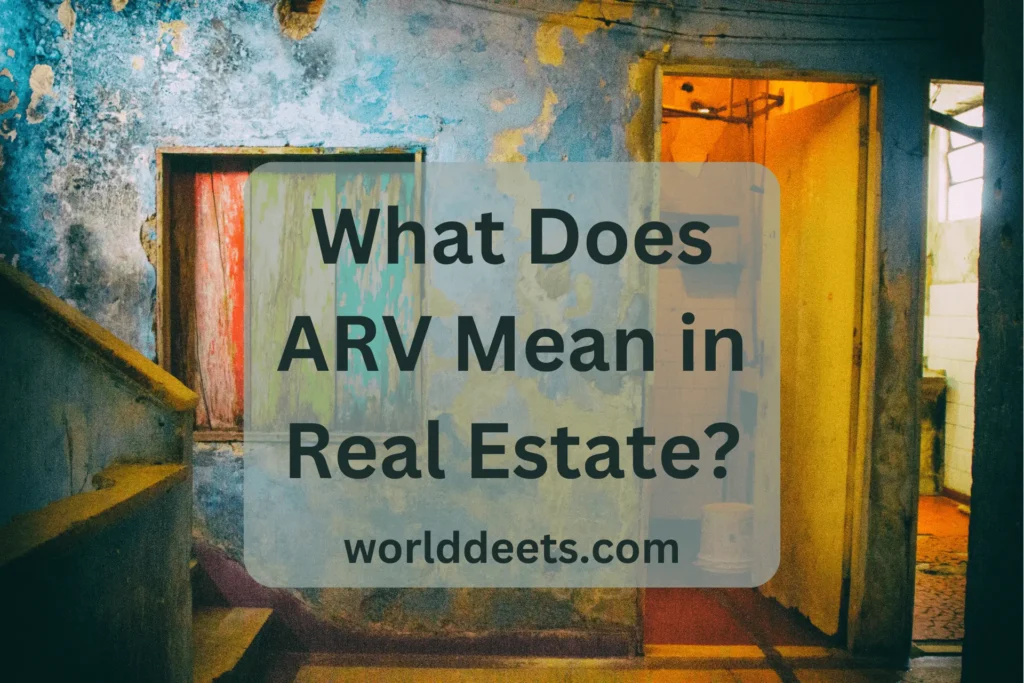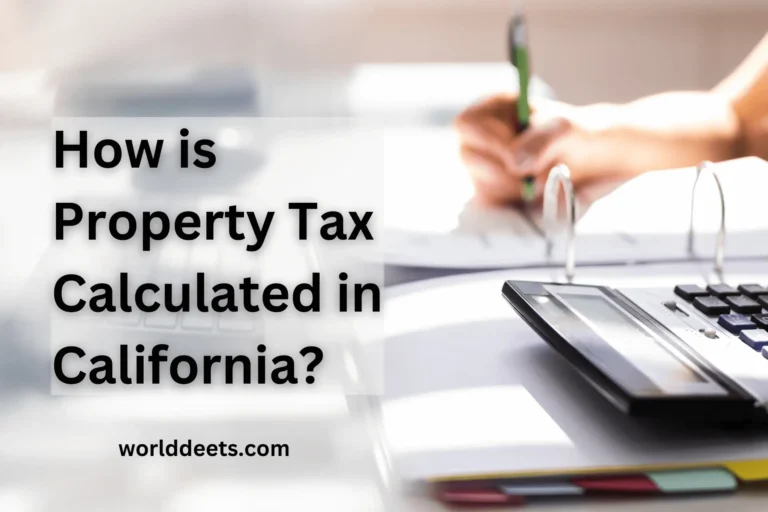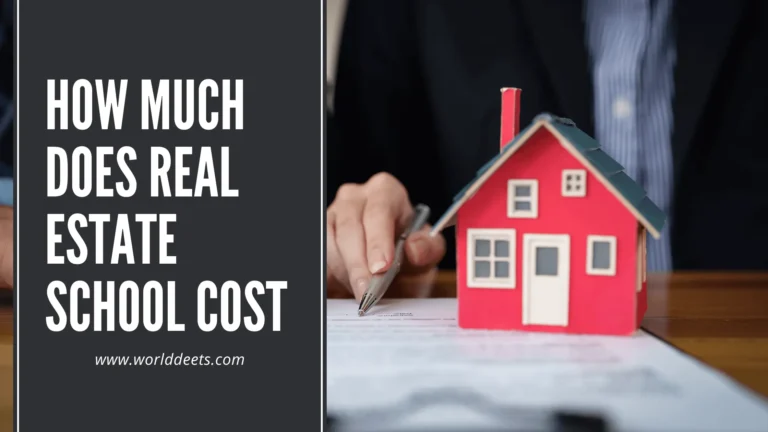Unveiling the Mystery: What Does ARV Mean in Real Estate?

In the ever-evolving landscape of real estate, an array of acronyms permeates discussions and transactions. Among these, the term ARV stands out, prompting curiosity and questions. What exactly does ARV mean, and why does it carry significant weight in the world of property dealings? Join us on a journey as we demystify the intricacies of ARV, delving into its nuances and unraveling its role in the real estate tapestry.
What Does ARV Mean in Real Estate & How to Calculate it?
At its core, ARV stands for After Repair Value, serving as a pivotal concept for real estate investors, flippers, and industry professionals. Unlike the current market value of a property, ARV is a forward-looking estimate that takes into account the potential value a property could attain after undergoing necessary repairs, renovations, or improvements.
Calculating After Repair Value (ARV) involves a detailed assessment of a property’s current condition, estimating the costs of necessary repairs and renovations, and projecting its potential value post-enhancements. Here’s a step-by-step guide on how to calculate ARV:
Step 1: Evaluate the Current Property Value
Find out what the property’s current market worth is to start. A comparative market analysis (CMA), which evaluates recently sold houses (comps) in the same neighborhood with comparable attributes, can be used to accomplish this. Professional appraisers, local property records, and real estate websites can all offer insightful information about the value in the market today.
Step 2: Identify Necessary Repairs and Renovations
Make sure you inspect the property thoroughly to find any flaws or locations that require repair. This includes both cosmetic upgrades and structural repairs. Get precise quotes for every repair or renovation project by speaking with experts or contractors. Be meticulous in creating a comprehensive list to ensure a more precise calculation.
Step 3: Estimate the Cost of Repairs
Once you have a detailed list of necessary repairs, obtain cost estimates from contractors or specialists in each respective field. This ought to pay for the supplies, labor, and any other expenses associated with the remodeling. An effective estimation of ARV requires a good grasp of these costs.
Step 4: Calculate ARV
With the current property value and estimated renovation costs in hand, use the following formula to calculate ARV
ARV=CurrentPropertyValue+ValueofRenovations
This formula is the essence of ARV, providing a projection of the property’s value after repairs and improvements.
Example:
Let’s say the current property value is $200,000, and the estimated cost of renovations is $40,000. The ARV would be:
ARV = $200,000 + $40,000 = $240,000
In this example, the projected After Repair Value is $240,000.
Step 5: Consider Contingencies
While the formula provides a baseline ARV, it’s essential to factor in contingencies. Unforeseen issues during renovations, market fluctuations, or delays in the construction process can impact the final value. Experienced investors often include a buffer, such as 5-10% of the total renovation costs, to account for these contingencies.
Importance of ARV in Commercial Real Estate
While After Repair Value (ARV) is a term more commonly associated with residential real estate, a similar concept known as “After Renovation Value” or “Stabilized Value” is crucial in the realm of commercial real estate. The importance of this metric in commercial real estate lies in its ability to guide investment decisions, assess risk, and determine the potential return on investment. Here are some key reasons why ARV is significant in the context of commercial real estate:
- Investment Decision-Making:
Investors in commercial real estate frequently look for homes that have the potential to increase in value through well-thought-out upgrades or renovations. ARV provides a forward-looking perspective on the property’s value post-renovation, aiding investors in making informed decisions about acquisitions, developments, or repositioning strategies. - Financing and Lending Considerations:
When seeking financing for a commercial real estate project, lenders and financial institutions often consider the property’s future value after improvements. A well-calculated ARV can enhance the investor’s ability to secure favorable financing terms, as it provides a clearer picture of the property’s potential to generate income and appreciation. - Risk Assessment:
Commercial real estate investments come with inherent risks, especially when significant renovations or developments are involved. ARV serves as a risk mitigation tool by helping investors assess the potential return on investment relative to the costs and risks associated with the project. This evaluation is crucial for minimizing uncertainties and making calculated investment decisions. - Market Positioning and Competitive Analysis:
Investors are able to strategically position themselves in the market by having a thorough understanding of a commercial property’s ARV. By comparing the potential renovated value with similar properties in the area, investors can assess their competitive advantage and set appropriate lease rates or sale prices. - Portfolio Optimization:
For investors with a portfolio of commercial properties, ARV is instrumental in optimizing the overall portfolio performance. It helps in identifying underperforming assets that might benefit from strategic renovations or repositioning to enhance their value. - Attracting Tenants or Buyers
Knowing the ARV allows property owners to market their commercial spaces effectively. It provides a compelling value proposition to potential tenants or buyers, showcasing the anticipated benefits of the property’s improved condition. - Exit Strategy Planning:
Planning an exit strategy requires careful consideration of ARV. Whether an investor plans to sell the property, refinance, or hold for long-term income, a clear understanding of the property’s post-renovation value guides the timing and execution of the exit strategy.
The concept of ARV is just as pertinent in commercial real estate as it is in residential real estate. With its insights into the possible profitability, risk considerations, and strategic placement of commercial assets, it is a useful tool for stakeholders and investors alike.
Related Blog: What Is An ADU In Real Estate?
Wrapping Up
In the realm of real estate, proficiency in navigating acronyms is synonymous with informed decision-making. ARV, or After Repair Value, emerges as a linchpin for strategic property transactions. It transcends numerical abstraction, embodying a compass that guides investors through the complexities of the real estate market. Armed with a comprehensive understanding of ARV and its multifaceted calculations, stakeholders empower themselves to traverse the property landscape with confidence and foresight. The next time ARV surfaces in a real estate discourse, rest assured it’s more than a sequence of letters—it’s a dynamic tool shaping the future trajectory of property investments.






